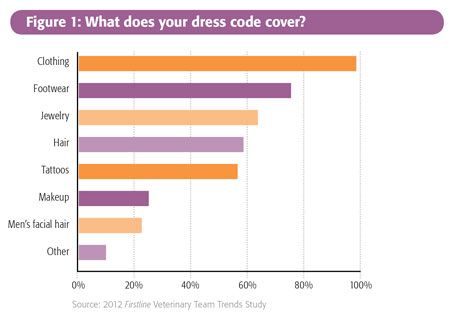Dress for success
While you're not what you wear, wearing the right clothes may make the difference in achieving career success and veterinary client compliance. Use your appearance to demonstrate you're a trustworthy source to help educate pet owners.
While 75 percent of team members say their practice has a dress code, only 8 percent have ever been asked to change their appearance to conform to the code, according to the 2012 Firstline Veterinary Team Trends Study. Figure 1 demonstrates some common items covered by dress codes.
“If you walk into an exam room in rumpled, dirty scrubs, hair barely pulled back, yawning, and mumble something unintelligible, does this say, ‘I’m trustworthy?’ Heck, no,” says Julie Mullins, a Firstline Editorial Advisory Board member and the staff training coordinator at Seaside Animal Care in Calabash, N.C. “Present yourself as you want to be seen—as a knowledgeable, competent professional.”
Just as important as the appearance of a team member is how he or she interacts with clients, says Firstline board member Nancy Potter, practice manager at Olathe Animal Hospital in Olathe, Kan. “A team member can have an immaculate uniform and look very professional, but if he or she fails to interact with the client confidently, appearance doesn’t matter.”

How-to tip: Look—and act—the part
- Show your confidence and professionalism with this checklist:
- Address clients by name
- Look people in the eye
- Speak up
- Use firm handshakes
- Demonstrate your knowledge
- Walk—don’t shuffle